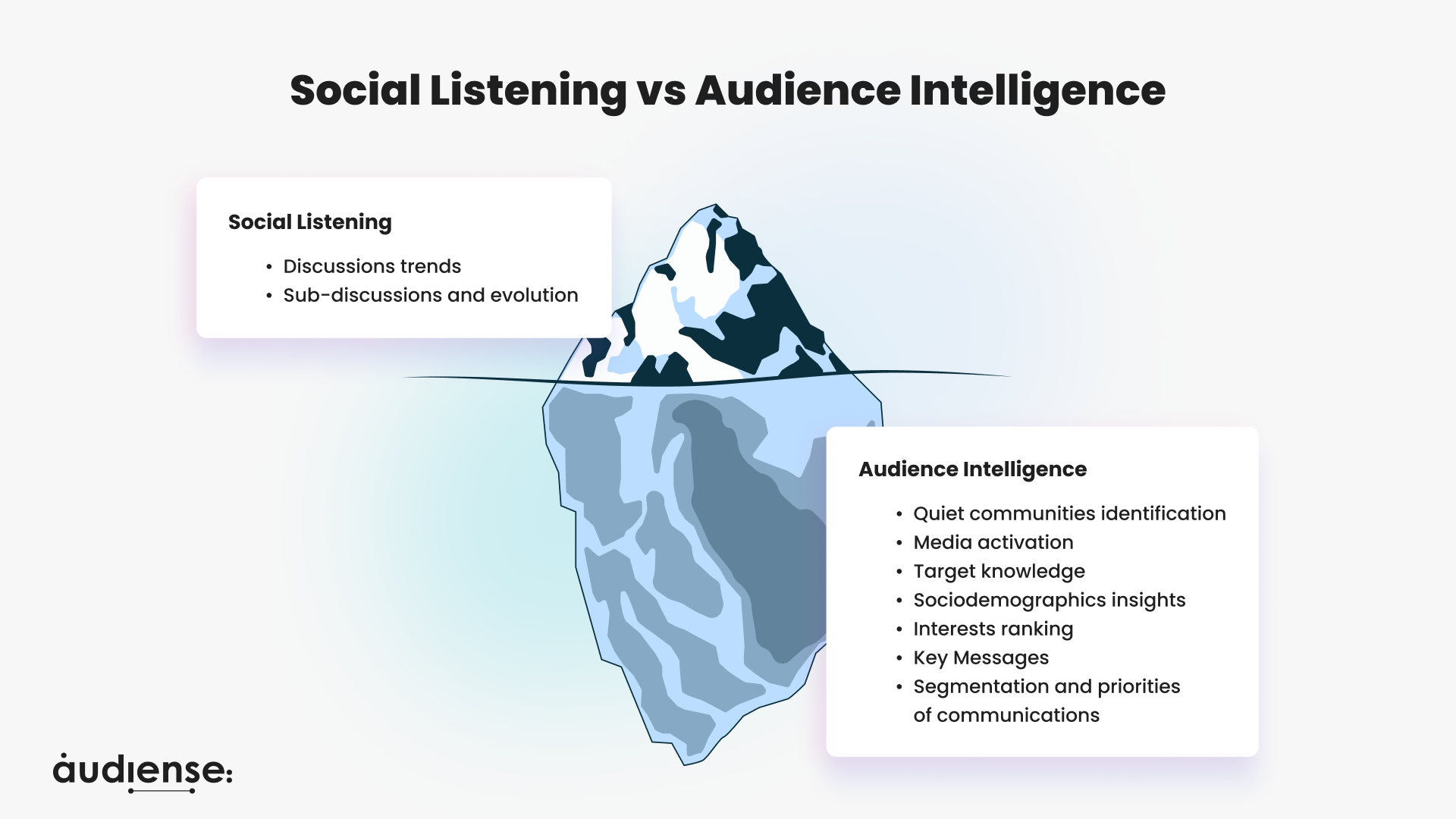How consumer insights is taught to future marketers
With evolving technology and a wealth of consumer data at their disposal, the next generation of marketers have their work cut out for them. Although they have better toolsets and more robust data points to work with, it also means they’re going to have a tougher time cutting through the noise to extract consumer insights that are actually valuable.
That’s where educators like Matt Duncan come in, putting his audience intelligence expertise to good use and bringing the right tools into the education industry. In this case study, we’ll explore how Matt teaches consumer insights to future marketers, with Audiense as a key tool.
Matt Duncan’s role in teaching social listening
Matt Duncan is the Director of the Brand Listening Program at the University of Colorado Boulder. This program is housed in the university's central marketing and communications department, known as Strategic Relations and Communications. He also takes on a lecturing role, where he teaches social listening in the university’s Advertising, Public Relations and Media Design program.
Challenges and objectives
In his primary role, Matt’s main objective is to build a holistic picture of their constituents to gain a comprehensive understanding. This understanding is needed to ensure that their constituents’ experiences, perspectives, questions and ideas are included in all their work, which may include everything from content strategy to customer service to crisis communications and beyond.
“The main challenge is how best to tell this narrative on a daily basis. Too short and you miss important context. Too long and you make internal consumption challenging.”
Matt faces a huge challenge in trying to establish the differentiation in audience intelligence via social media data vs. social media marketing. “There is still a culture of discounting social media data as a bonafide source of learning about your customers and communities,” he says.
In his lecturing role, Matt explains that students are quite familiar with the outbound components of social media from their personal experiences, internships and other classes. However, they’re not as familiar with the listening and intelligence opportunities.
So his main objective is to nurture critical thinking and give them hands-on experience of the importance of social media data in their audience understanding toolbox. He believes that students should realize this no matter the career path they go into. Matt aims to expose his students to an emerging layer of tools/analysis that complement social listening, so they have practical knowledge to advance in their careers.

Solution – Bringing the right tools into the classroom
To give his students the kind of toolset exposure they need, Matt brings in a number of leading industry tools into his teaching. This includes Crowd Tangle, TweetDeck, Awario, RivalIQ and Google to name a few.
He helps students understand the importance of building their own toolbox for accomplishing their goals and performing specific tasks. He also helps them understand the capabilities and limitations of tools i.e., what they can and can’t do using those tools. Students learn the different ways in which these capabilities and limitations overlap and complement each other.
“They learn the concepts and mechanics so they can transfer these skills to other platforms that might be in use at the companies they end up working for,” Matt says.
In the fall of 2022, he started introducing his class to Audiense, which he believes has immense power in taking social media data and bringing next-level audience understanding. Now Audiense - along with their latest acquisition SOPRISM, which brings even more data from Meta - plays a vital role in Matt’s classroom as the data they provide can deliver stronger insights, which lead to stronger campaigns, customer support, crisis planning and more.
Once the students learn to differentiate between social listening and audience intelligence, his teachings progress into the use of the data points from Audiense and how that can bring more powerful insights.
“A repeated theme in my approach is finding the gems and going beyond what every other brand is doing. To do this you need to filter through lots of noise and have a lot of context and curiosity.”
Matt believes that Audiense can solidify these concepts with the students who have the curiosity to dig into the “that is cool, but what do I do with it?” questions.
Results
With the help of Audiense, Matt says that he can now help his students look beyond conversations but also into connections, interests and more. “We can dig even more into the ‘why?’ rather than just staying at the ‘what?’ like many organizations still do.”
He says that these tools deepen their understanding of expected audiences and also discover unexpected audiences.
According to Matt, tools like Audiense will help the industry to move on from dated models of audience understanding and segmentation like basic demographics and generations. Although these factors still have some relevance, it’s not to the same extent as before.
“Interests, passions, behaviors, actions have always spread beyond basic labeling like generations. It was more difficult to realize that in the past but now there are no longer any excuses to go beyond the basics and into the consumer points that really matter,” he says.
Conclusion
The education sector has a lot to gain from audience intelligence tools such as Audiense, as is obvious from this case study. According to Matt, the key to success with audience intelligence is switching mindsets and cultures from “or” to “and.” He believes that platforms such as Audiense are making this very robust and easier on the collection and analysis side due to its capabilities and integrations. However, there’s still a lot of work to be done connecting the dots on the implementation side inside organizations.
As for the evolution of data access in the industry, Matt believes that alternating between the consumer and user perspective and the professional perspective is crucial. This helps to expose the complexities of the brand-consumer relationship today. With technology progressing at lightning speed, we need to make sure not to forget the importance of taking time to dig deeper.
“I think that will be the key to see where we go next with access to consumer data. If we take time and are respectful, we can really find the gems that benefit both the brand and the consumer. If we don’t, then I think we will only continue to stay at the surface level best case or drive people away worst case,” Matt concludes.





.png?width=60&name=image%20(62).png)
